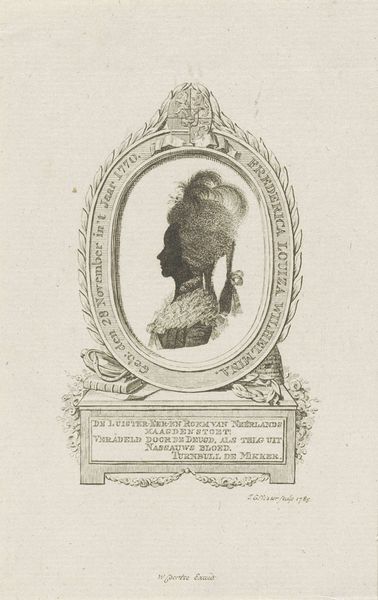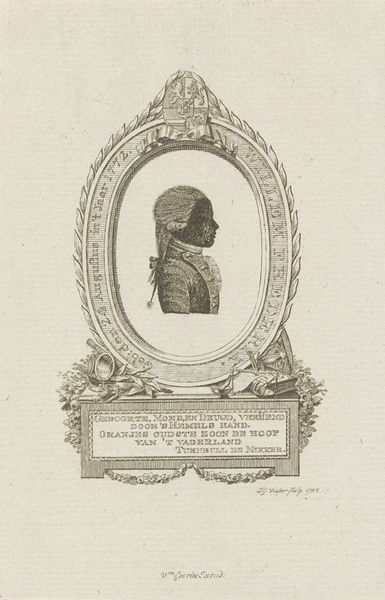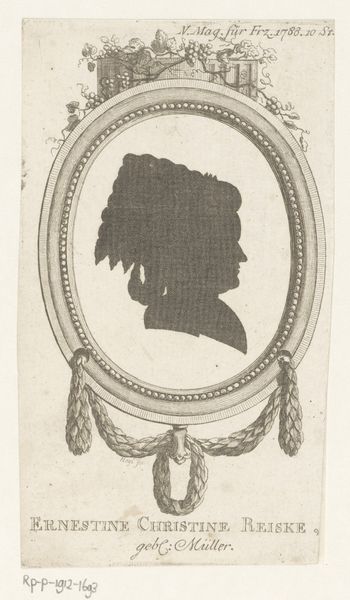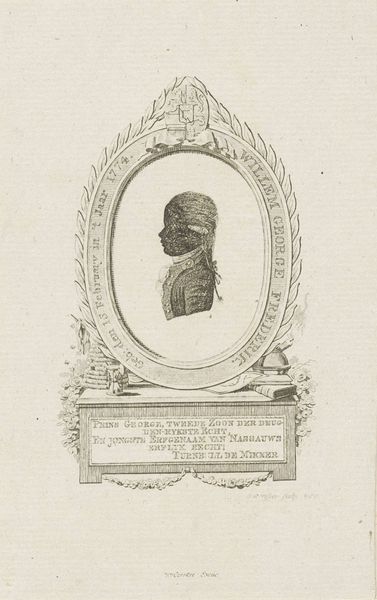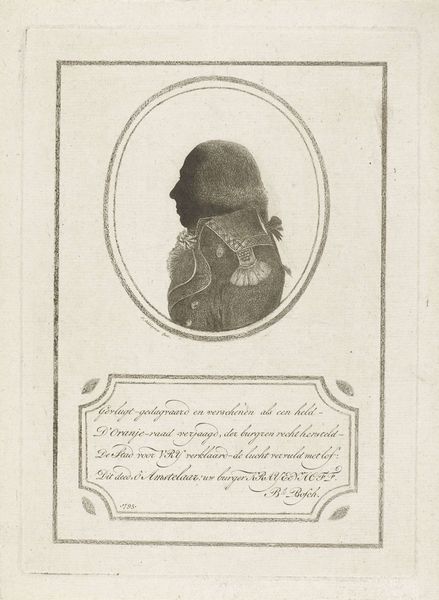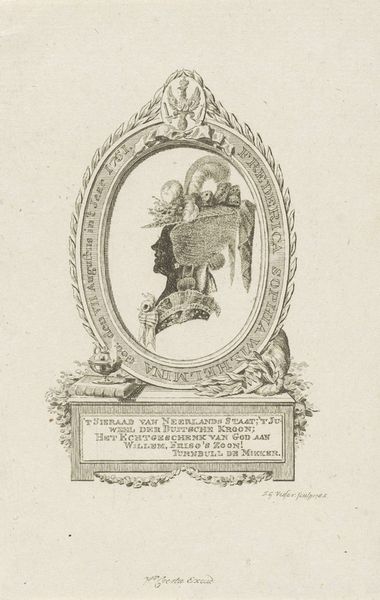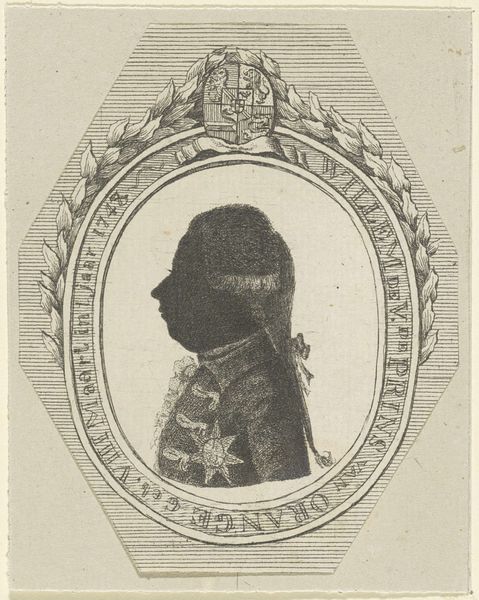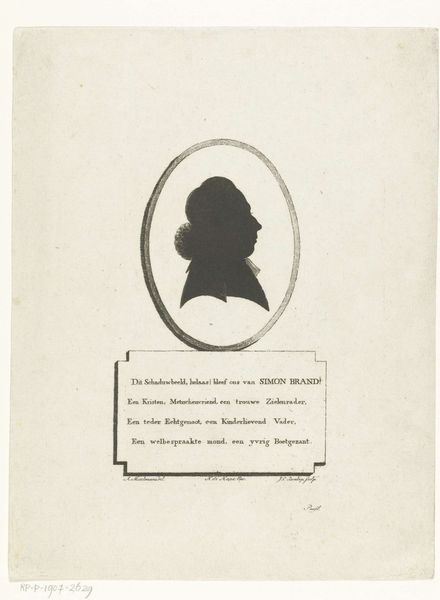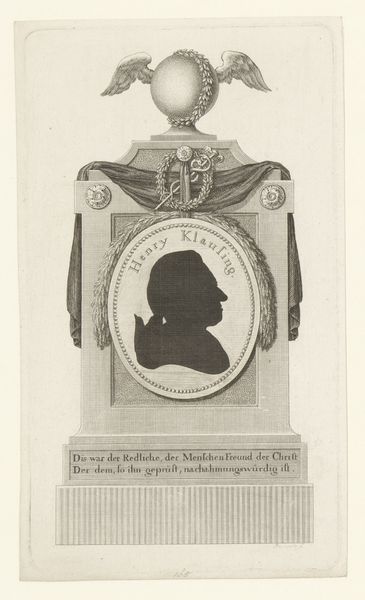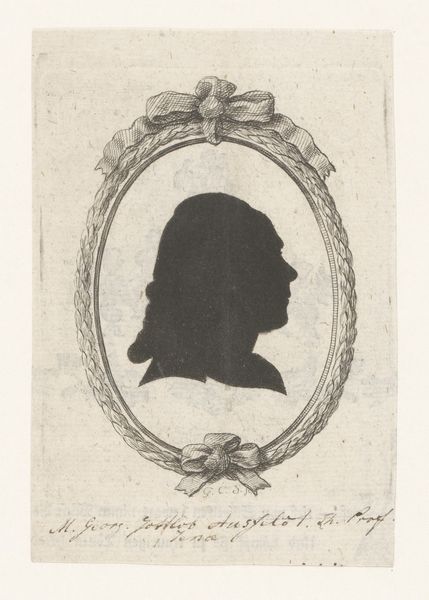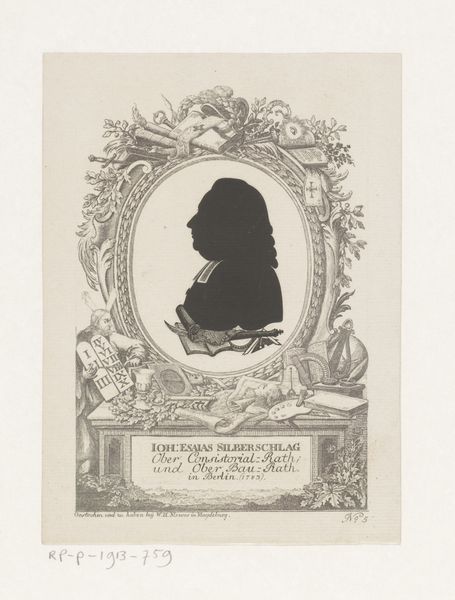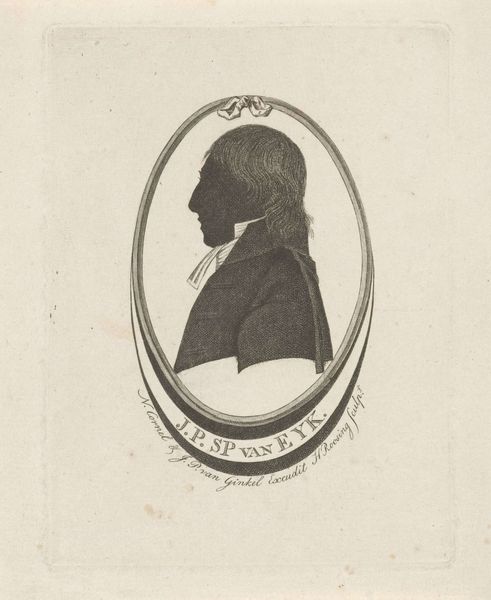
engraving
#
portrait
#
neoclacissism
#
figuration
#
line
#
engraving
Dimensions: height 145 mm, width 100 mm
Copyright: Rijks Museum: Open Domain
Jan Gerritsz Visser made this silhouette portrait of Willem V, Prince of Orange-Nassau using etching. This image represents more than just a likeness; it reflects the turbulent politics of the Dutch Republic in the late 18th century. Silhouettes, as a popular and affordable form of portraiture, democratized image-making. Willem V, the last Stadtholder, faced increasing criticism for his perceived weakness and autocratic tendencies. Note the inscription beneath the portrait, hinting at the subject's trials, and the artist's pointed commentary on power, virtue, and the struggle against adversity. The inclusion of a laurel wreath conveys the hope that Willem V would be seen as a virtuous leader. To fully grasp this artwork's significance, we need to consider the historical context. Accessing pamphlets, political tracts, and archival records from this period helps us understand the nuanced debates surrounding the House of Orange and their role in Dutch society. Through such research, we can appreciate how art like this etching served as a vehicle for expressing political allegiances.
Comments
No comments
Be the first to comment and join the conversation on the ultimate creative platform.
